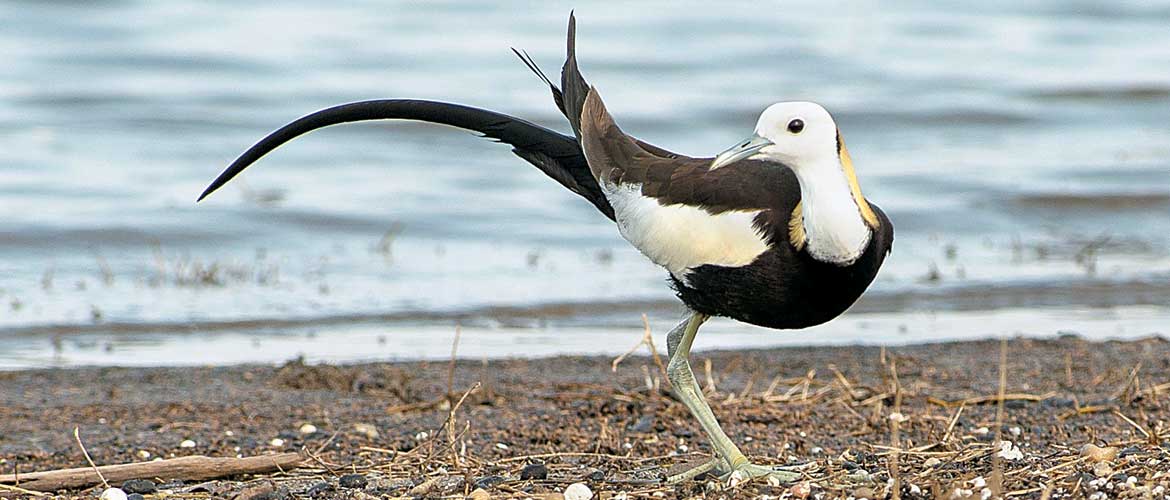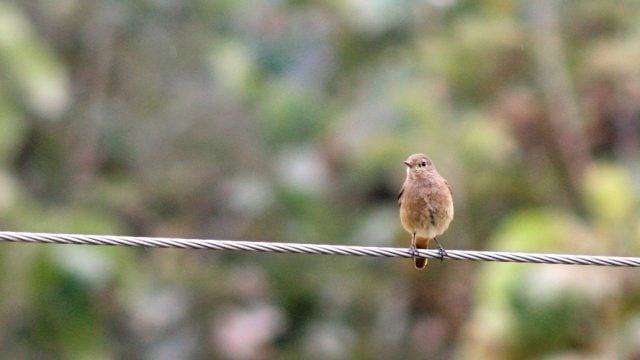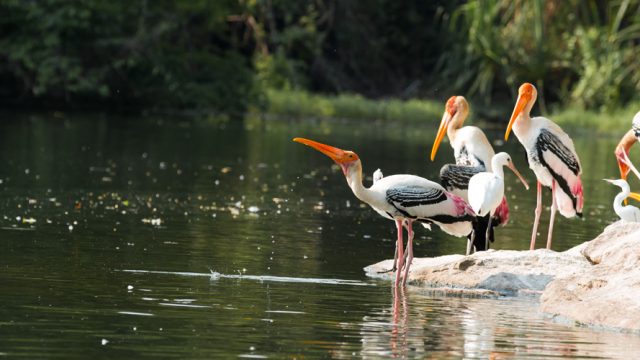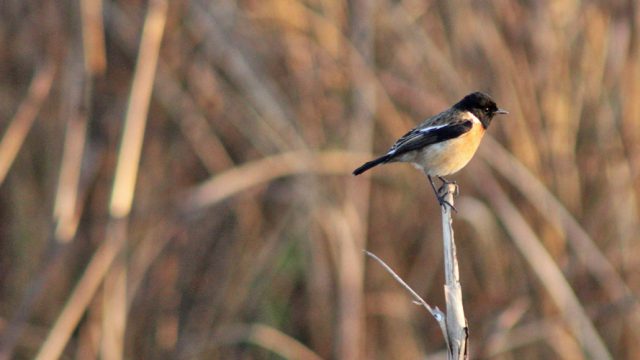A shimmering lake surrounded by thick forests and verdant hills, Navegaon National Park is located
Navegaon National Park is home to the Dr Salim Ali Bird Sanctuary, which contains almost 60 per cent of the avian species found in the state. The birds, including a large number of migratory species, are attracted to the beautiful lake, which is surrounded by lush green forest on all four sides. The park also has a supposedly deep swamp, spread over 15–20 acres, in its vicinity. It is an ideal place for nesting but is not open to tourists for safety reasons.
ORIENTATION
This park can be accessed via four gates: Jambhadi, Kholi, Baki and Pitambartola. The park authorities can arrange jungle safaris across various trails. The forest department has watchtowers and cabins across the sanctuary to facilitate sightings. It also runs a small museum, interpretation centre and library.
Entry Indians ₹30; Foreigners ₹60 Vehicle ₹100 for car or jeep or ₹150 for a mini bus Guide fee ₹300 per round
Timings Between 6.00am and 8.00am and exit at 11.00am (winter); 5.00am to 10.00am (summer). The afternoon safaris are scheduled between 2.30pm and 6.30pm
HISTORY
The Navegaon Lake is actually a catchment of Navegaon Dam, which was built in the 18th century by Kolhu Patil at a cost of Rs. 64,000. Patil belonged to the Kohali community, which is credited to have helped farmers overcome their dependency on rains. The Kohali community with their ingenuity, hard work and sound technical knowledge, constructed numerous tanks so that they could harvest one assured crop – rice or sugarcane – in a year.

According to legend, queen Durgavati, wife of Gond king Dalpat Shah, commissioned the Navegaon tank and entrusted Kolhu and his brother Chimna with the job. However, since Durgavati died in 1564 and the tank was built at the beginning of the 18th century, the dates do not seem to reconcile.
It is said that Kolhu selected the site of Navegaon tank by observing the level of dust and grass particles on the trees and surrounding hills. Water had little chance to escape during the monsoon due to the area’s bowl shape.
Due to the presence of such a large water body, Navegaon has been a haven for both resident and migratory birds. Noted ornithologist Maruti Chitampalli, a former forest officer who stayed in Navegaon for some years, claims he had spotted the rare pink-headed duck, dump duck here. The slender loris, a tree-dwelling primate found in southern India, is also said to have been spotted in the park.
The lake has a small island, known as Mal Dongar, in its centre. It is believed that in times gone by, villagers would seek shelter on the island whenever a tribe of professional robbers was in the area. There is an idol of Lord Hanuman on the bank of the lake. Tourists can reach the island via boat.
THINGS TO SEE
Navegaon National Park is home to as many as 26 species of mammals, nine species of reptiles and over 209 species of birds. Every winter, migratory birds visit the sanctuary in search of favourable climate and breeding grounds. The park’s main water body, Navegaon Lake, is where most of these birds converge. Traversing the length and breadth of the park, birding enthusiasts can hope to spot the hornbill, grey headed fish eagle, oriole, woodpecker, owl and several other species of birds, close to 209 in all. Of course, the park is also home to wolf, jackal, leopard, sloth bear, tiger and a few species of antelope such as the spotted deer, sambar, barking deer, four-horned antelope and even the rare mouse deer.
This national park also has a repository of several economical, medical, ornamental and aromatic plant species.
The diversity of terrain in this region is also remarkable. The altitudes in Navegaon National Park range from about 30 metres to 702 metres above sea level. Steep ridges, narrow valleys and deep gorges add to the region’s charm.
Visitors can also trek up to Saat Bahini or the Seven Sisters peaks surrounding the Navegaon Lake. Each one of the peaks houses a temple. The panoramic views of the landscape from the temples is well worth the journey uphill. There is a shrine dedicated to Patil on one of the seven peaks.
WHERE TO STAY AND EAT
Travellers can enjoy the beauty of the lake to the fullest by staying in the huts, which have the most amazing view of the water body.
The Forest Development Corporation of Maharashtra has cottages inside the sanctuary. Sanjay Kuti (Tariff: ₹1,035) is near the lake with two sites while Holiday Homes (Tariff: ₹700), near the gate, offers eight suites. There is also a Youth Hostel (₹2,400–5,400) near the gate with two dorms. For meals, there is a canteen, situated in the park premises.
For bookings, log on to W accommodation.mahaonline.gov.in. You will have to register on the website to book online. You can also directly make bookings from the Maharashtra Tourism Development Corporation offices in major cities (Tel 0712-2533325, Nagpur).
AROUND NAVEGAON NP
There are a few interesting places around the Navegaon National Park which are worth visiting.
Pratapgad Fort (15 km)
This fort is located in the Arjuni Morgaon taluka of the Gondia District. There is also a Shiv temple in the area.
Itiadoh Dam (17 km)
Another dam in close proximity to Navegaon National Park is the Itiadoh Dam. Construction of this dam was planned during the British rule itself. However, it did not see the light of day until the Indian government seriously considered it after independence. The dam was then constructed as per the same plan that had been originally chalked out by the British. Built on the Gadvi river, this dam has been used to generate hydroelectricity and for irrigation purposes since 1970.
Tibetan Camp (21 km)
There is a Tibetan camp close by, at Gothangaon. An old guesthouse, built by a British officer in the 18th century, is also interesting. There is a Buddhist temple near the camp as well. Another lesser-known place near Gothangaon is Gobardoh. It has a small water body and a pristine forest.
Inputs by Karen D’Souza
|
FAST FACTS |
|
When to go October to April. Best time to visit Navegaon Dam: winter months, when migratory birds flock to the area |
|
Wildlife Offices |
|
Chief Conservation of Forests (Wildlife), Navegaon |
|
Forest Development Corporation of Maharashtra |
|
GETTING THERE |
|
Region Vidarbha Location In the easternmost part of Maharashtra; S of Gondia Distance 160 km SE of Nagpur Route from Nagpur NH6 upto Armori-Bhandaare Highway; NH353C upto Navegaon Bandh; state road to Rampuri, upto the park Air Nearest airport: Nagpur (150 km/ 2 hrs). Taxi charges ₹3,000–3,500 Nagpur airport has flights connecting to all major cities of India |
|
Rail Nearest railhead: Deulgaon (2 km), on Gondia-Chandrapur rail route. Convenient railhead is Gondia (75 km/ 45 mins); Innovas, taveras and scorpios available upto Navegaon for about ₹1,000 plus fuel charges. The Nagpur railway station is 150 km away |
|
Road Navegaon Dam can easily be reached by road. Public buses can be taken from Nagpur to reach Navegaon bus station |
|
Buses are also available from Gondia and Arjuni |
Dr Salim Ali Bird Sanctuary
Gothangaon Tibetan Camp
India





